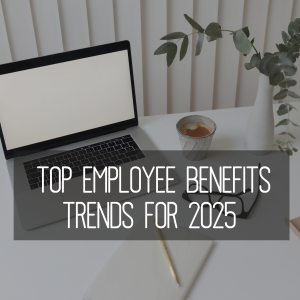
by admin | Jun 10, 2025 | Custom Content, Employee Benefits
 The word “cancer” carries a weight that extends far beyond its medical implications. Beyond the physical and emotional toll, a cancer diagnosis can bring significant financial strain. While your primary health insurance will cover many treatment costs, there are often substantial out-of-pocket expenses that can quickly add up. This is where cancer insurance comes in. But what exactly is it, and how does it work?
The word “cancer” carries a weight that extends far beyond its medical implications. Beyond the physical and emotional toll, a cancer diagnosis can bring significant financial strain. While your primary health insurance will cover many treatment costs, there are often substantial out-of-pocket expenses that can quickly add up. This is where cancer insurance comes in. But what exactly is it, and how does it work?
What is Cancer Insurance?
Cancer insurance is a type of supplemental health insurance policy designed to provide financial assistance specifically if you are diagnosed with cancer. It’s not a substitute for comprehensive health insurance but rather an additional layer of protection to help manage the costs associated with cancer treatment and recovery. These policies typically pay out a lump-sum benefit or provide ongoing payments upon a cancer diagnosis that meets the policy’s definition.
Think of it as a financial safety net tailored to the unique challenges of battling cancer. The funds received from a cancer insurance policy can be used for a variety of expenses that your primary health insurance might not fully cover, such as:
- Deductibles and Coinsurance: Even with good health insurance, you’ll likely have deductibles and coinsurance amounts to pay.
- Lost Income: If you or your caregiver need to take time off work for treatment and recovery, it can lead to a significant loss of income.
- Travel and Accommodation: Traveling to specialized treatment centers can incur substantial costs for transportation, lodging, and meals
- Experimental Treatments: Some cutting-edge or experimental treatments may not be fully covered by standard health insurance.
- Other Living Expenses: The financial burden of cancer can extend to everyday expenses like groceries, utilities, and transportation.
How Does It Work?
- Purchase a Policy: You buy a cancer insurance plan through an insurer, often as an add-on through your employer or directly as an individual.
- Pay Monthly Premiums: Like other insurance policies, you’ll pay a regular premium to maintain coverage.
- Get Diagnosed: If you’re diagnosed with cancer while your policy is active, you file a claim. Cancer insurance will generally only pay benefits for the first occurrence of cancer and will not provide benefits if you have already been diagnosed before purchasing the insurance.
- Receive Benefits: Depending on your policy, you may receive a lump sum or payments for specific treatments and services.
While no one wants to imagine facing cancer, being prepared can make a significant difference. Cancer insurance helps reduce the financial stress of a diagnosis, allowing you to focus more on recovery and less on expenses. However, it’s essential to review your current health coverage and weigh whether supplemental cancer insurance fits your needs and budget.

by admin | Apr 22, 2025 | Custom Content, Employee Benefits
 Life sometimes throws you a curveball. You might sprain an ankle playing soccer, need surgery, or experience a difficult pregnancy. These situations can temporarily prevent you from working and earning an income. That’s where short-term disability insurance comes in. It acts as a financial safety net, providing income replacement while you recover and get back on your feet.
Life sometimes throws you a curveball. You might sprain an ankle playing soccer, need surgery, or experience a difficult pregnancy. These situations can temporarily prevent you from working and earning an income. That’s where short-term disability insurance comes in. It acts as a financial safety net, providing income replacement while you recover and get back on your feet.
What is Short-Term Disability Insurance?
Short-term disability pays you a portion of your salary (usually between 40% and 70%) in situations when non-job-related injuries, illnesses, or other medical issues prevent you from working for a limited time-period. (Note: “Non-job-related” is an important phrase because injuries sustained while you’re on the clock will typically be covered by worker’s compensation vs. short-term disability). It typically provides benefits for a shorter period, ranging from a few weeks to several months, depending on the policy and your situation.
Types of Short-Term Disability Insurance:
- Traditional: Employers pay the full premium
- Contributory: Both employers and employees contribute to the benefit cost
- Core Buy-Up: Employees have the option to purchase more coverage
- Voluntary: Employees alone pay for disability benefits
What to Look for in a Short-Term Disability Policy:
- Premium: The monthly amount you (or your employer) pay for the policy.
- Benefit Amount: How much of your income will be replaced?
- Benefit Period: How long will benefits be paid?
- Elimination Period: How long must you wait before benefits begin?
- Covered Conditions: What illnesses, injuries, and conditions are covered?
- Exclusions: What situations are not covered?
- Cost: How much will the premiums be?
Illnesses or Injuries That Are Not Covered by Short-Term Disability:
- Pre-existing conditions
- Self-inflicted injuries
- Use of drugs (non-prescription) or other illegal substances
- Injury that occurred from doing something illegal
- Cosmetic procedures that are not medically necessary
- Work-related injuries or illnesses
An unexpected illness or injury can happen to anyone. Short-term disability insurance provides a crucial safety net, protecting your financial well-being during a time of need.

by admin | Apr 15, 2025 | Custom Content, Employee Benefits
 The Rise of Voluntary Benefits
The Rise of Voluntary Benefits
As healthcare costs increase, so does the demand for voluntary benefits. These optional benefits allow employees to select and pay for additional perks to meet their individual needs, especially in today’s diverse workforce. They’re also a valuable supplement to health insurance, particularly as healthcare expenses rise and affordability becomes a challenge.
Trending Voluntary Benefits
Here are some voluntary benefits that are currently popular or expected to gain traction this year:
- Supplemental Health Insurance: As healthcare costs continue to rise, more employees are looking for ways to manage unexpected expenses like deductibles, copays, coinsurance, and other out-of-pocket costs during accidents, serious illnesses, or hospital stays. Accident, critical illness, and hospital indemnity insurance can help fill these gaps. Unlike major medical insurance, these supplemental plans are not subject to many federal health and benefits regulations, making them a more affordable option. By offering additional coverage, these policies provide employees with peace of mind and financial stability when faced with health challenges.
- Student Loan Repayment Assistance: One in four U.S. adults under 40 have student loan debt, according to the Pew Research Center. Educational assistance programs, traditionally used for expenses like tuition and supplies, can now also cover principal and interest on qualified education loans, with payments made directly to the lender or the employee. This benefit, allowing up to $5,250 in tax-free student loan repayment annually, expires on December 31, 2025.
- Term Life Insurance: Achieving financial security is a priority for many Americans, including being prepared for the loss of a loved one. While 80% of Americans worry about their financial readiness in the event of an unexpected death, nearly 30% still do not have life insurance, according to Guardian. Many organizations offer base-level group term life insurance, partially or fully funded by the employer, with the option for employees to purchase additional coverage. Since employers have already vetted and selected policy options, group life insurance can be an easy choice for employees.
- Cybersecurity and Identity Theft Protection: With increasing cyberattacks, data breaches, and identity theft incidents, employees are more aware of digital risks. Protecting personal and financial information has become a priority. Additionally, the shift to remote and hybrid work environments has introduced new security challenges, as personal devices and home networks are often less secure than corporate systems.
Legal Plans and Services: Legal plan voluntary benefits are highly relevant because employees often require legal assistance for personal matters. These plans alleviate stress, reduce work disruptions, and offer support for various situations, including estate planning, real estate, and traffic issues.
Today’s workforce is diverse, with varying needs and priorities. Employees are no longer content with a one-size-fits-all benefits package. Many workers want benefits that cater to their unique lifestyles, financial situations, and personal goals. Voluntary benefits provide employees with the flexibility to choose the perks that matter most to them, creating a more customized and engaging compensation package.

by admin | Feb 17, 2025 | Custom Content, Employee Benefits
 Most organizations treat employee benefits like a seasonal event. Open enrollment brings a flurry of activity – emails, seminars, and even benefits fairs. However, communication often dwindles after this initial push, leaving employees confused and underutilizing their valuable benefits.
Most organizations treat employee benefits like a seasonal event. Open enrollment brings a flurry of activity – emails, seminars, and even benefits fairs. However, communication often dwindles after this initial push, leaving employees confused and underutilizing their valuable benefits.
This is a missed opportunity. Research shows that employees crave more benefits education, spending hours researching their options. By proactively engaging employees throughout the year, organizations can:
- Improve Employee Understanding: Ongoing communication helps employees retain information and make informed decisions, rather than relying solely on a single, overwhelming open enrollment period.
- Reduce Confusion & Mistakes: Employees often make costly mistakes, such as under-saving for healthcare expenses or failing to utilize valuable benefits like employee assistance programs. Consistent communication can help them avoid these pitfalls.
- Boost Benefits Utilization: Regular reminders encourage employees to actively use their benefits, such as gym memberships, financial counseling, or legal services, leading to improved well-being and reduced stress.
- Enhance Employee Engagement: When employees understand and utilize their benefits, they experience increased job satisfaction, reduced stress levels, and improved overall well-being, leading to higher productivity and retention rates.
- Gain Valuable Insights: Year-round communication allows HR teams to gather valuable data through employee surveys and feedback, enabling them to refine their communication strategies and better address employee needs.
Building a Successful Communication Plan
Two primary approaches can guide your communication strategy:
- Calendar-Based: This traditional approach focuses on pre-determined themes for each quarter or month, aligning with seasonal trends and employee needs. For example, Q1 might focus on retirement planning, Q2 on health and wellness, Q3 on family-related benefits, and Q4 is Open Enrollment season.
- Action-Based: This more modern approach triggers communication-based on employee actions, such as when they file a claim or contribute to their Health Savings Account (HSA). This ensures communication is most relevant when employees are actively engaged with their benefits.
Key Considerations:
- Go Beyond the Booklet: Get creative with your content! Repurpose your open benefits booklet and enrollment presentations into a variety of formats. Utilize diverse communication channels, such as emails, podcasts, newsletters, intranet resources, text messages, and interactive online tools to make information easily accessible.
- Focus on Employee Needs: Tailor your communication to address specific employee concerns and questions, such as how to reduce healthcare costs or plan for retirement.
- Measure and Refine: You can’t manage what you can’t measure. Be sure to track the effectiveness of your communication efforts through surveys, employee feedback, and utilization data. Use these insights to refine your strategy and improve employee engagement.
Benefits education is communicating information about available benefits in ways that employees can connect to and understand. Communicating benefits information year-round is important because employees’ lives – and their situations – are constantly changing. They get married, divorced, adopt a child or have medical challenges arise.
If employees are engaged with their benefits throughout the year, they are more likely to value and use their benefits and will be better informed about their decisions and/or changes they need to make during the next Open Enrollment period!

by admin | Jan 20, 2025 | Employee Benefits
 Employee benefits are the indirect and non-cash compensation paid to an employee. These benefits are given to employees over their salaries and wages. As we look ahead to 2025, companies are increasingly exploring innovative solutions to address the evolving needs of their workforce. Driven by shifts in work environments, economic challenges, and technological progress, the following trends are becoming key elements of a competitive employee benefits package.
Employee benefits are the indirect and non-cash compensation paid to an employee. These benefits are given to employees over their salaries and wages. As we look ahead to 2025, companies are increasingly exploring innovative solutions to address the evolving needs of their workforce. Driven by shifts in work environments, economic challenges, and technological progress, the following trends are becoming key elements of a competitive employee benefits package.
Mental Health Support
With nearly 60 million Americans currently facing some form of mental illness, prioritizing mental health has shifted from being a luxury to a critical necessity for fostering a high-performing, supportive workplace. Mental health services and policies that allow mental health days have become more common as the impact of mental well-being on overall health and productivity becomes increasingly recognized.
Employees are placing greater value on employers who prioritize mental health, seeing it as a sign of commitment to their well-being. This not only helps reduce stigma but also enhances employees’ ability to manage stress and prevent burnout in the workplace.
Financial Education and Debt Management
Financial stress is well-known for its negative impact on employee morale, productivity, and overall well-being. To address these challenges, employers are increasingly emphasizing financial wellness benefits for 2025.
Offering employees resources to manage debt and make informed financial decisions can greatly enhance their overall well-being while demonstrating a genuine commitment to their financial health and education. Financial wellness programs may include tools for budgeting, debt counseling, and education on key personal finance topics like homeownership and investing.
Retirement Savings
As retirement becomes a top priority for many employees, companies are placing greater emphasis on retirement savings options. In addition to the traditional 401(k) match, some employers are now offering student loan repayment matching, helping employees reduce debt while simultaneously saving for retirement. Health Savings Accounts (HSAs) are also gaining popularity as a valuable tool for retirement planning, offering tax benefits and the opportunity to save for future healthcare expenses.
Voluntary Benefits
Voluntary benefits provide a cost-effective way to offer additional value to employees. From pet insurance to identity theft protection, these benefits give employees the flexibility to select coverage that meets their individual needs, boosting overall satisfaction.
Childcare and Fertility Benefits
For employees who are starting or planning to start a family, the increasing costs of family-related services, such as childcare, adoption, or fertility treatments, can quickly become a significant financial strain. Childcare alone can account for up to 10% of a working couple’s income.
- Paid family leave is not guaranteed by law in the U.S. but it is a highly sought-after perk. A parental leave policy – one that considers both parents and accounts for adoption and fostering in addition to childbirth – can show your employees you care about supporting their home lives.
- Childcare assistance supports working parents facing rising costs of living. While some larger employers may offer on-site childcare, smaller businesses can show their commitment to working parents by helping to subsidize the cost of childcare through employer contributions or pre-tax deductions.
- Fertility assistance supports employees who are going through costly infertility treatments, surrogacy, and IVF.
In an era of rapid change and shifting employee expectations, businesses must prioritize employee well-being and satisfaction through comprehensive benefits packages to remain competitive in attracting and retaining talent. By investing in flexible, customizable, and employee-focused benefits, organizations can foster a thriving work environment that not only draws top talent but also keeps them engaged and loyal for years to come.

by admin | Jan 14, 2025 | Custom Content, Employee Benefits
 New to a Health Savings Account (HSA)? Here’s What You Need to Know
New to a Health Savings Account (HSA)? Here’s What You Need to Know
As the name suggests, a Health Savings Account(HSA) is a special savings account used to pay for healthcare-related expenses. An HSA has potential financial benefits for now and later. Not only can you save pre-tax dollars in this account to pay for qualified medical expenses (QMEs), but HSAs can also provide valuable retirement benefits.
If you’re new to HSAs, here are some tips to help you get started:
- Understand the Basics:
- Triple Tax Advantage: HSAs offer a unique triple tax advantage: contributions are tax-deductible, earnings grow tax-deferred, and withdrawals for qualified medical expenses are tax-free.
- Eligibility: To be eligible for an HSA, you must be enrolled in a high-deductible health plan (HDHP). A HDHP is an insurance plan with higher deductibles and out-of-pocket costs. However, HDHPs carry lower premiums than traditional insurance plans, and in most cases, the cost savings in premiums alone are significant.
- Contribution Limits: There are annual contribution limits set by the IRS. The HSA contribution limits for 2025 are $4,300 for self-only coverage and $8,550 for family coverage. Those 55 and older can contribute an additional $1,000 as a catch-up contribution.
2. Maximize Your Contributions:
- Contribute Regularly: Set up automatic contributions to your HSA to make saving consistent and effortless.
- Consider a Catch-Up Contribution: If you’re 55 or older, you can contribute an additional $1,000 as a catch-up contribution.
3. Use Your HSA Strategically:
- Pay for Qualified Medical Expenses: Use your HSA funds to pay for eligible medical expenses, such as doctor visits, prescriptions, and dental care.
- Invest for the Future: Consider investing your HSA funds for long-term growth. This can be a great way to save for other future healthcare needs or even retirement. Once you reach age 65, you can withdraw money from your HSA for any reason without penalty – only ordinary income tax due.
- Unused HSA Funds: HSA funds can be rolled over to the next year. However, if you withdraw funds for non-medical expenses, you’ll pay income tax plus a 20% penalty.
Money that goes in and out of an HSA is tax free as long as payments and reimbursements from the account are used only for Qualified Medical Expenses (QMEs). QMEs are healthcare-related items or services designated by the IRS that you can write off when you do your taxes. There are thousands of medical procedures, services and types of equipment that are considered QMEs, and the IRS frequently updates the list.
It is important to know that your HSA account is yours – not your employers. Unlike healthcare Flexible Spending Accounts (FSAs), which your employer technically owns, your HSA belongs to you. So, when you leave a job, you keep all of the money you’ve saved up in your HSA and can transfer into a new HSA or employer-sponsored HSA at your next job.
The Bottom Line
HSAs are often referred to as triple tax-advantaged and are one of the best savings and investment tools available under the U.S. tax code. As a person ages, medical expenses tend to increase, particularly when reaching retirement age and beyond. Therefore, starting an HSA early and allowing it to accumulate over a long period can contribute greatly to securing your financial future. By understanding the basics of HSAs and following these tips, you can make the most of this valuable financial tool.

 The word “cancer” carries a weight that extends far beyond its medical implications. Beyond the physical and emotional toll, a cancer diagnosis can bring significant financial strain. While your primary health insurance will cover many treatment costs, there are often substantial out-of-pocket expenses that can quickly add up. This is where cancer insurance comes in. But what exactly is it, and how does it work?
The word “cancer” carries a weight that extends far beyond its medical implications. Beyond the physical and emotional toll, a cancer diagnosis can bring significant financial strain. While your primary health insurance will cover many treatment costs, there are often substantial out-of-pocket expenses that can quickly add up. This is where cancer insurance comes in. But what exactly is it, and how does it work?




